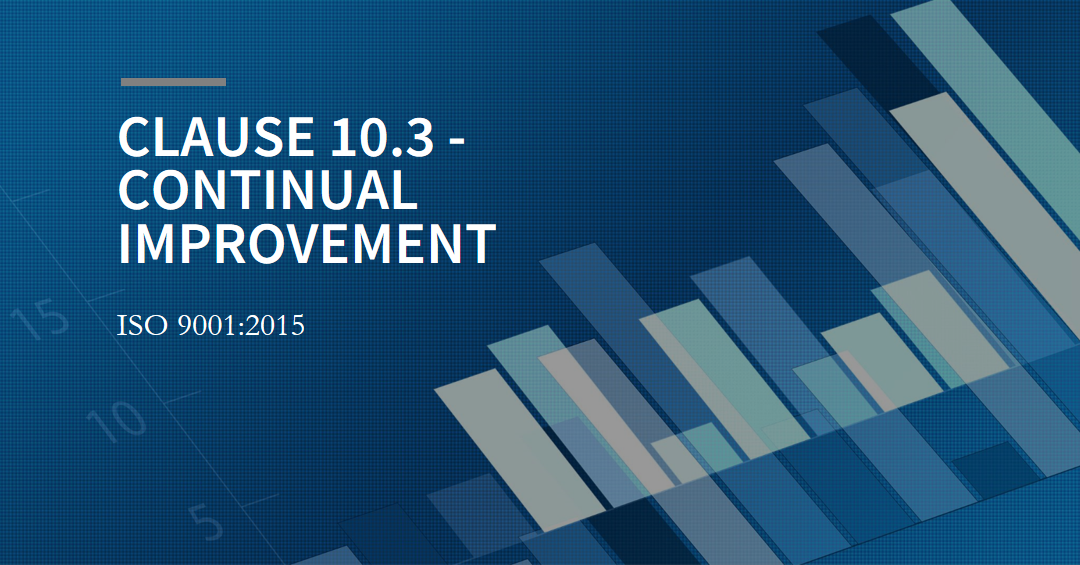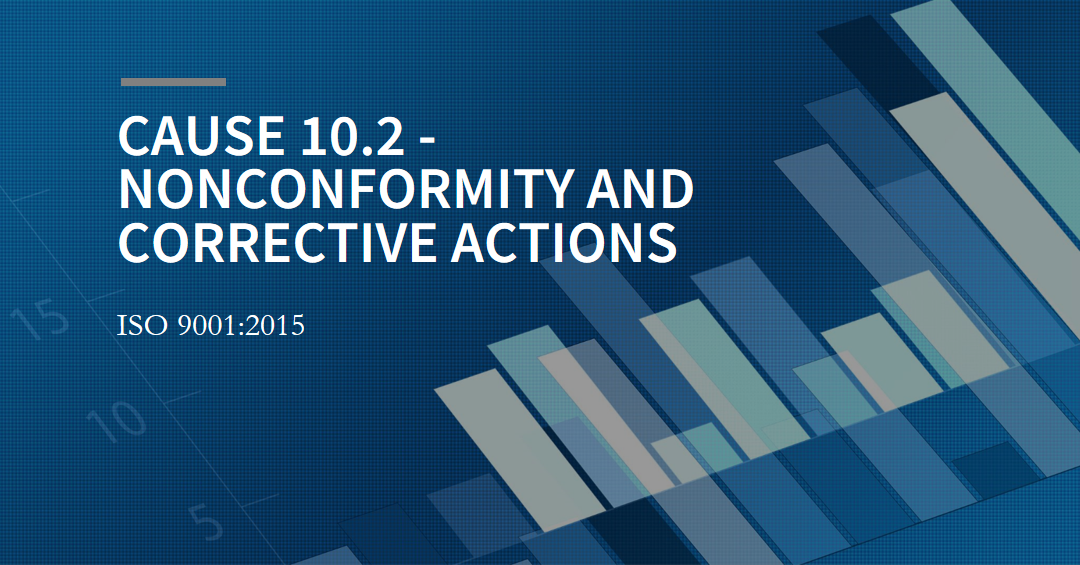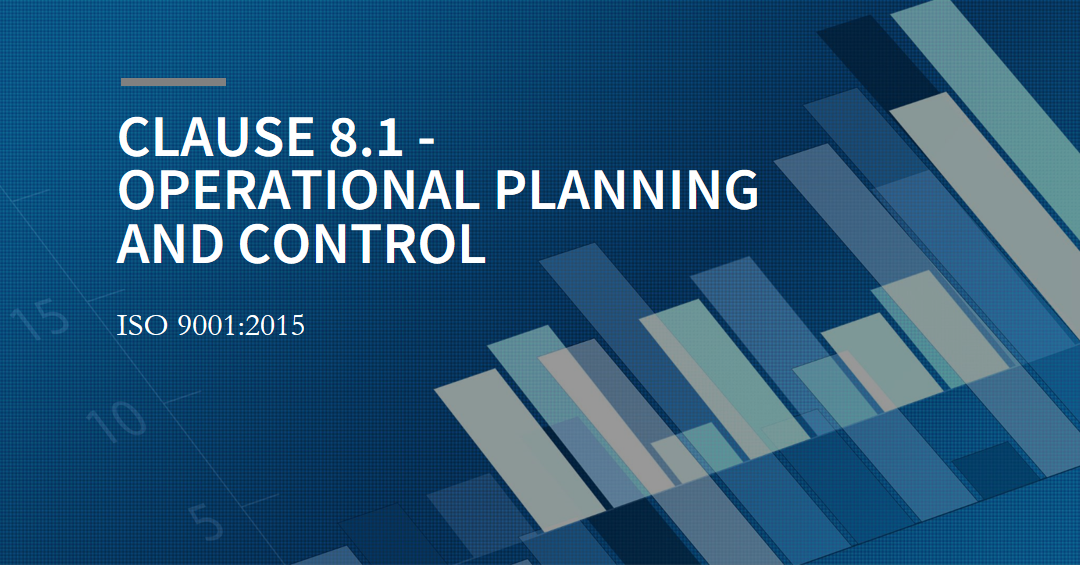
Introduction to ISO 9001:2015 Certification
In today's competitive market landscape, quality is not just a luxury but a fundamental component that can set a business apart. ISO 9001:2015 is a globally recognized standard for quality management systems (QMS), designed to help organizations ensure that they meet the needs of customers and other stakeholders while also meeting statutory and regulatory requirements.
The ISO 9001:2015 certification is part of the larger ISO 9000 family, which deals with various aspects of quality management and contains some of ISO's best-known standards. These standards are based on a number of quality management principles, including a strong customer focus, the involvement of high-level company management, a process approach, and a standard for continuous improvement.
The value of ISO 9001:2015 is not just in its ability to provide a procedural template for quality management; it's in the way it fosters a culture of excellence and drives businesses to evaluate and improve their processes consistently. This certification is not industry-specific and can be implemented in any organization, regardless of its size or the sector it operates in.
Let's delve into the multifaceted benefits of ISO 9001:2015 and explore how it can transform your business processes, customer satisfaction, and overall operational efficiency.
Key Points:
- ISO 9001:2015 is a global standard for quality management.
- It is applicable to all industries and organizations of any size.
- The certification focuses on meeting customer needs and regulatory requirements.
- Quality management principles are at the heart of ISO 9001:2015.
The Evolution of ISO 9001 Standards
The ISO 9001 standards have undergone several revisions since their initial publication, with the 2015 iteration being the most recent and significant. Understanding the evolution of these standards is crucial for any organization seeking to implement a quality management system that is both robust and contemporary.
A Brief History of ISO 9001:
- 1987: The first version of ISO 9001 was introduced, setting the stage for global quality standards.
- 1994: A minor revision was made to incorporate preventive actions to avoid nonconformity.
- 2000: A major revision shifted the focus toward process management and continuous improvement.
- 2008: Incremental changes were introduced, emphasizing the need for a sustained QMS.
- 2015: The current version, ISO 9001:2015, introduces a risk-based thinking approach and aligns with other ISO management system standards through the Annex SL framework.
Key Updates in the 2015 Revision:
- High-Level Structure: ISO 9001:2015 adopted the Annex SL template, facilitating integration with other ISO management systems.
- Risk-Based Thinking: The standard now requires organizations to identify risks and opportunities, promoting proactive management.
- Flexibility: Less prescriptive requirements allow for greater flexibility in documentation.
- Context of the Organization: A new section that requires organizations to consider both internal and external issues that can impact their strategic objectives and the planning of the QMS.
- Leadership and Commitment: Greater emphasis on leadership engagement with the QMS.
How ISO 9001:2015 Differs From Previous Versions:
- Adaptability: ISO 9001:2015 is designed to be dynamic and adaptable to a changing world.
- Compatibility: There is a stronger focus on compatibility with other ISO standards.
- Simplicity: The language and structure have been simplified for easier implementation and understanding.
By tracing the trajectory of the ISO 9001 standards, organizations can appreciate the forward-thinking approach of the 2015 version, designed to address modern-day challenges and prepare businesses for the future.
Key Points:
- ISO 9001 has evolved significantly since 1987.
- The 2015 revision is the most current and integrates risk-based thinking.
- It adopts a structure that makes it easier to use in conjunction with other management systems.
What is Quality Management?
Quality Management (QM) is a comprehensive approach that organizations use to ensure that their products and services meet customer expectations consistently and efficiently. It is a key factor that can set businesses apart in a competitive landscape by driving customer satisfaction and operational excellence.
The Role of Quality Management in Various Industries:
Quality Management is not confined to any single industry. It plays a pivotal role across various sectors, including manufacturing, healthcare, technology, and services. In manufacturing, QM ensures that products are defect-free and meet technical specifications. In healthcare, it ensures that patient care meets regulatory standards and best practices. In technology and services, it focuses on delivering a user experience that meets the promised performance and support.
Components of an Effective Quality Management System:
An effective QM system is built on several core components that work together to drive quality throughout the organization:
- Customer Focus: The primary goal of QM is to meet and exceed customer expectations.
- Leadership: Strong leadership provides direction and purpose for quality management.
- Engagement of People: Involving employees at all levels is essential for an effective QM system.
- Process Approach: Understanding activities as processes that link together and function as a system contributes to efficiency and effectiveness.
- Improvement: Continuous improvement is a permanent objective of the organization.
- Evidence-Based Decision Making: Decisions based on the analysis and evaluation of data lead to better outcomes.
- Relationship Management: An organization and its external providers are interdependent, and a mutually beneficial relationship enhances the ability of both to create value.
A QM system built on these principles helps organizations streamline their operations, reduce errors, and ensure a level of quality that consistently satisfies customers.
Key Points:
- Quality Management is critical across all industries for product and service excellence.
- It includes principles like customer focus, leadership, and continuous improvement.
- A well-executed QM system leads to improved efficiency and customer satisfaction.
With a clear understanding of what quality management entails, we can now examine the specific benefits that ISO 9001:2015 brings to an organization's quality management practices.
The Core Benefits of ISO 9001:2015 Certification
The ISO 9001:2015 certification is not just a badge of honor; it's a strategic tool that brings a multitude of benefits to an organization. Let's delve into the core advantages of adopting this quality management standard.
Enhanced Quality Management
The standard's framework is designed to streamline an organization's processes, ensuring quality is maintained at every stage of production or service delivery. By implementing ISO 9001:2015, companies can focus on key areas of output quality and consistency, which directly translates into superior products and services.
Key aspects of enhanced quality management include:
- Process Optimization: Streamlining processes to reduce waste and inefficiency.
- Consistency: Creating a blueprint for operations that ensures consistency in output.
- Continuous Improvement: Fostering a culture that is always looking for ways to do things better.
Increased Customer Satisfaction
By adhering to an internationally recognized quality management system, organizations can significantly boost their customer satisfaction levels. This is achieved through a consistent approach to meeting customer requirements and resolving complaints more effectively.
ISO 9001:2015 aids in increasing customer satisfaction through:
- Expectation Management: Clearly understanding and meeting customer needs and expectations.
- Feedback Mechanisms: Implementing systems to gather and act on customer feedback.
- Trust Building: Enhancing customer trust through reliable, high-quality products and services.
Operational Efficiency and Cost Savings
Adopting ISO 9001:2015 can lead to significant cost savings by reducing waste and improving operational efficiency. By optimizing resource usage and enhancing process flows, businesses can reduce costs without compromising quality.
Operational enhancements often include:
- Waste Reduction: Identifying and eliminating waste in processes, whether it's time, materials, or effort.
- Resource Optimization: Using resources more effectively to reduce costs.
- Case Studies: There are numerous instances where companies have documented savings and efficiency gains after implementing ISO 9001:2015.
Access to New Markets
ISO 9001:2015 certification can serve as a key to new markets and business opportunities. It often acts as a prerequisite in the procurement specifications of many large companies and is especially crucial when competing in international markets.
Certification opens doors by:
- Meeting Global Standards: Aligning with an international standard that is recognized worldwide.
- Competitive Edge: Differentiating from competitors who are not certified.
- Tender Opportunities: Meeting the requirements to participate in global tender processes.
Improved Employee Engagement and Performance
An often-overlooked benefit of ISO 9001:2015 is the positive impact it has on employees. By involving staff in the improvement processes and providing clear expectations and responsibilities, organizations can nurture a more engaged and productive workforce.
ISO 9001:2015 enhances employee engagement through:
- Involvement in Quality: Encouraging employees to contribute to quality improvements.
- Clear Responsibilities: Defining roles and expectations clearly for all staff members.
- Skills Development: Offering training and development opportunities aligned with the standard's requirements.
Risk Management and Compliance
ISO 9001:2015's proactive approach to identifying and mitigating risks helps organizations anticipate and address potential issues before they arise. Additionally, the standard ensures that companies are up to date with industry regulations, which can prevent costly legal issues.
Risk management benefits include:
- Risk Identification: Proactively spotting potential risks to quality and performance.
- Compliance: Ensuring processes comply with the latest regulations and standards.
- Organizational Resilience: Building a robust system that can adapt and respond to changes and challenges.
Key Points:
- ISO 9001:2015 drives enhanced quality management and consistency.
- It plays a critical role in boosting customer satisfaction and loyalty.
- Operational efficiency and cost savings are significant benefits of the certification.
- The standard opens up new market opportunities and gives a competitive advantage.
- Employee engagement and performance see marked improvements under ISO 9001:2015.
- Risk management and compliance are better handled with a certified QMS.
The benefits of ISO 9001:2015 are clear and far-reaching, impacting various aspects of an organization. Now, let's explore how to implement this powerful standard within your business.
Implementing ISO 9001:2015 in Your Business
Transitioning to an ISO 9001:2015 compliant quality management system is a strategic decision that can streamline your operations and enhance your market position. Here's a step-by-step guide on how to get started with implementation and what the certification process entails.
Getting Started with ISO 9001:2015
Before diving into the certification process, it's essential to understand what ISO 9001:2015 requires and how it fits within your organization.
- Gap Analysis: Assess your current processes against ISO 9001:2015 standards to identify areas that need improvement.
- Management Buy-In: Secure commitment from top management, as their leadership is critical for successful implementation.
- Employee Training: Educate your workforce about the standard and its benefits to ensure their cooperation and participation.
- Documentation: Develop a Quality Management System (QMS) documentation that aligns with ISO 9001:2015 requirements.
- Process Reengineering: Redesign your processes to comply with the standard and to enhance efficiency.
- Internal Audits: Conduct internal audits to test the effectiveness of your QMS and to prepare for the certification audit.
- Continual Improvement: Establish mechanisms for ongoing evaluation and improvement of the QMS.
The Certification Process
Once your organization is ready, you can begin the formal certification process, which typically involves the following steps:
- Choose a Certification Body: Select an accredited certification body to perform the audit of your QMS.
- Stage One Audit: This preliminary audit assesses your QMS documentation and readiness for the next stage.
- Stage Two Audit: A more detailed audit evaluates the implementation and effectiveness of your QMS.
- Address Non-Conformities: If any issues are identified, you'll need to address them before the certificate can be issued.
- Certification: Upon successful completion of the audits and resolution of non-conformities, you'll receive your ISO 9001:2015 certification.
- Surveillance Audits: Regular audits are conducted to ensure ongoing compliance with the standard.
Overcoming Implementation Challenges
Implementing ISO 9001:2015 can come with its set of challenges, but with the right approach, these can be effectively managed.
- Resistance to Change: Mitigate this by involving employees in the process and clearly communicating the benefits.
- Resource Allocation: Ensure that adequate resources, including time and finances, are allocated for the implementation.
- Complexity of Documentation: Simplify documentation by focusing on processes rather than procedures and using visual aids where possible.
Key Points:
- Implementing ISO 9001:2015 requires careful planning and commitment across the organization.
- The certification process involves internal preparation, selection of a certification body, and passing the audit stages.
- Addressing common implementation challenges is crucial for a smooth transition.
With a clear understanding of the steps involved in implementing ISO 9001:2015, organizations can confidently move forward with the process, knowing the benefits that await them.
Real-World Example Case Studies
To truly appreciate the impact of ISO 9001:2015 certification, let's explore some real-world examples and case studies. These stories highlight how organizations across various industries have leveraged the standard to achieve remarkable improvements in quality, efficiency, and customer satisfaction.
Success Stories of ISO 9001:2015 Implementation
Manufacturing Industry Case Study:
- Company: A mid-sized automotive parts manufacturer.
- Challenge: Inconsistent product quality and rising customer complaints.
- Implementation: Adopted ISO 9001:2015 to standardize processes and improve quality controls.
- Result: Reduced defects by 30%, increased customer satisfaction scores, and secured a major contract with an automotive giant.
Healthcare Sector Case Study:
- Organization: A regional hospital network.
- Challenge: Inefficient patient care processes and documentation practices.
- Implementation: Implemented ISO 9001:2015 to streamline patient care and administrative processes.
- Result: Achieved a 20% reduction in patient wait times and a 15% improvement in clinical documentation accuracy.
Technology Services Case Study:
- Company: A software development firm.
- Challenge: Project delivery delays and budget overruns.
- Implementation: Integrated ISO 9001:2015 to refine project management and client engagement processes.
- Result: On-time project delivery increased to 95%, and client retention rates improved by 25%.
Lessons Learned from ISO 9001:2015 Adoption
Organizations that have successfully adopted ISO 9001:2015 often share valuable insights:
- Engagement is Key: Employee and stakeholder engagement throughout the implementation process is crucial for success.
- Leadership Sets the Tone: Strong leadership and clear communication from top management can drive the adoption process effectively.
- Continuous Improvement is a Journey: ISO 9001:2015 is not a one-time achievement but an ongoing commitment to excellence.
Reflections and Advice from Industry Experts
Industry experts often emphasize the importance of a strategic approach to ISO 9001:2015 implementation:
- Start with Why: Understand the reasons behind seeking certification and align them with business objectives.
- Customize the Approach: Tailor the QMS to the specific needs and culture of the organization.
- Leverage Technology: Utilize software and technology to simplify the documentation and audit processes.
Key Points:
- Real-world case studies demonstrate the tangible benefits of ISO 9001:2015 certification.
- Success stories span a variety of industries, from manufacturing to healthcare to technology services.
- Lessons learned highlight the importance of engagement, leadership, and a commitment to continuous improvement.
- Expert advice underscores the need for a strategic, tailored approach to QMS implementation.
These examples and reflections provide a glimpse into the transformative potential of ISO 9001:2015 and serve as a source of inspiration for businesses embarking on this journey.
Conclusion: Is ISO 9001:2015 Right for Your Business?
As we wrap up our exploration of ISO 9001:2015, it's time to reflect on whether this certification aligns with your business goals. The decision to implement a quality management system should be strategic, considering both the immediate and long-term benefits.
Recap of the Key Benefits of ISO 9001:2015:
- Enhanced Quality Management: Fosters a culture of excellence that permeates every aspect of your operations.
- Increased Customer Satisfaction: Builds a stronger, more reliable relationship with your customers.
- Operational Efficiency: Streamlines processes, reduces waste, and saves costs.
- Global Recognition: Opens doors to new markets and increases your competitive edge.
- Employee Engagement: Creates a better work environment, leading to higher productivity.
- Risk Management: Proactively addresses potential issues, ensuring longevity and sustainability.
Considerations for Small and Medium-sized Enterprises (SMEs)
For SMEs, the thought of implementing a quality management system may seem daunting. However, ISO 9001:2015 is designed to be flexible and scalable, making it just as applicable to small businesses as it is to large corporations.
- Scalability: The principles of ISO 9001:2015 can be applied to businesses of any size.
- Customizability: The standard can be tailored to the unique processes and needs of your business.
- Return on Investment: Despite the initial investment, the long-term savings and benefits often outweigh the costs.
Final Thoughts on the Value of ISO 9001:2015 Certification
ISO 9001:2015 is more than a certificate to hang on the wall; it's a blueprint for building a resilient, quality-focused business that stands the test of time. Whether you're looking to improve internal processes, enhance customer satisfaction, or expand into new markets, ISO 9001:2015 provides the framework to achieve these goals.
As with any business decision, it's crucial to weigh the costs and benefits. But for many organizations, the benefits of ISO 9001:2015 certification make it an indispensable part of their business strategy.
Key Points:
- ISO 9001:2015 offers significant advantages that can benefit businesses of all sizes.
- SMEs can particularly benefit from the standard's scalability and flexibility.
- The long-term value of certification often justifies the initial investment.
With the information provided in this comprehensive guide, you're now equipped to make an informed decision about pursuing ISO 9001:2015 certification. If you're ready to elevate your business's quality management practices, the next step is to begin the certification process and embark on the path to excellence.
Additional Resources and Further Reading
For those interested in learning more about ISO 9001:2015 or beginning the journey toward certification, here are some valuable resources:
- Official ISO 9001:2015 Documentation: ISO.org
- Recommended Reading: "ISO 9001:2015 In Plain English" by Craig Cochran
- Training and Workshops: Check local quality management training providers for upcoming ISO 9001:2015 courses.
By utilizing these resources and continuing to educate yourself and your team, you can ensure a successful ISO 9001:2015 implementation and the ongoing benefits that come with it.
Thank you for joining us on this deep dive into the world of ISO 9001:2015. We hope you found this guide informative and empowering as you strive for quality excellence in your business endeavors.
















